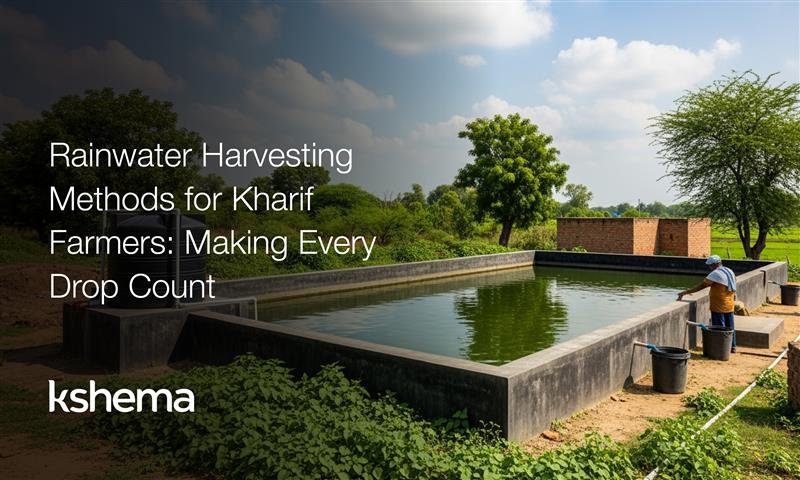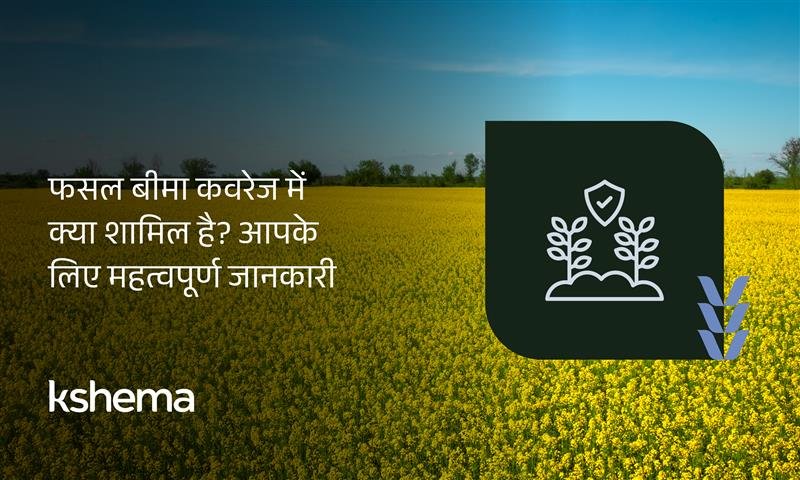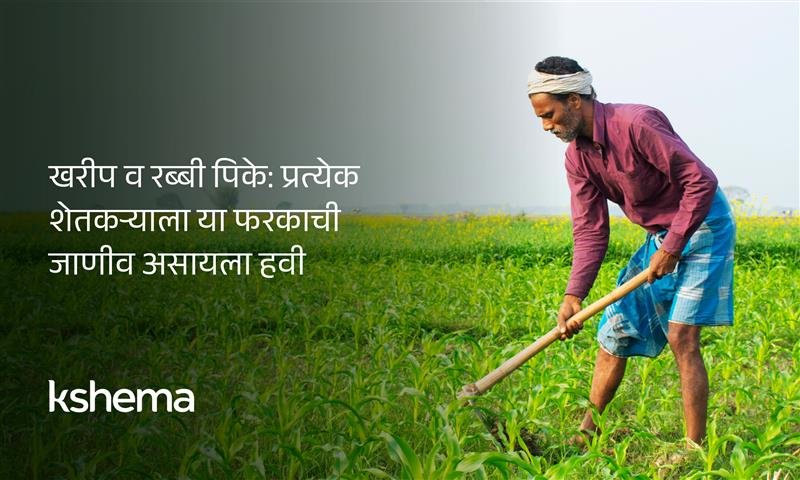The Kharif season brings both opportunity and uncertainty for Indian farmers. With major crops like paddy, maize, pulses, and cotton depending on the southwest monsoon, timely and adequate rainfall is critical. But in recent years, erratic or delayed rains and dry spells have become more common.
That’s why more farmers are turning to rainwater harvesting methods—simple, cost-effective ways to capture and store rainwater directly in the storage systems of their farms. These methods can help reduce water stress, improve soil moisture, and ensure crops survive even when the rains don’t arrive as expected.
In this blog, we’ll explore rainwater harvesting methods that are proven, practical, and suited to Indian rural conditions, especially for small and marginal Kharif farmers.
Why Rainwater Harvesting Matters for Kharif
- Over 60% of Indian agriculture is rain-fed, especially in states like Maharashtra, Madhya Pradesh, Rajasthan, Jharkhand, Chhattisgarh, Odisha, and parts of Karnataka and Telangana.
- Even in high-rainfall regions, runoff and poor water retention lead to water shortages soon after the rains stop.
- Kharif crops are vulnerable to moisture stress during the flowering and grain-filling stages.
- Provide protective irrigation during dry spells
- Improve soil health and nutrient uptake
- Recharge local groundwater
- Reduce dependency on borewells or tankers
1. Farm Ponds (Khet Talab)
What it is: A dug-out pond within or near the farm that collects and stores rainwater or excess runoff. Best for: Individual or group use in medium to high rainfall areas Benefits:- Stores water for 1–2 irrigations during dry spells
- Helps maintain livestock and nursery plants
- Reduces downstream flooding and erosion
2. Contour Bunding
What it is: Construction of small earthen bunds along the natural contours of sloped land. Best for: Hilly or undulating terrain Benefits:- Slows down rainwater runoff
- Promotes water percolation into the soil
- Reduces soil erosion
3. Nala Plugging and Check Dams
What it is: Building small barriers across seasonal streams or nalas to collect rainwater. Best for: Cluster or community-level use in villages Benefits:- Stores runoff during heavy rains
- Recharges nearby wells and borewells
- Provides surface water for short-term irrigation
4. Percolation Pits and Trenches
What it is: Small dug pits or trenches in the field or nearby fallow land to allow water to seep underground. Best for: Dryland areas or places with falling groundwater levels Benefits:- Helps in recharging wells
- Increases root zone moisture
- Improves groundwater quality over time
5. Loose Boulder Structures (LBS)
What it is: Stacking loose stones in the path of small streams or water channels on hilly terrain. Best for: Tribal or semi-arid regions with small catchments Benefits:- Slows water flow
- Promotes infiltration into surrounding soil
- Prevents gully erosion
6. Field Bunding and Compartmental Bunding
What it is: Small rectangular plots are created using bunds to divide larger fields. Best for: Black soil regions like Maharashtra, Madhya Pradesh, Karnataka Benefits:- Holds rainwater where it falls
- Enhances moisture conservation
- Reduces nutrient run-off
Using Rainwater Wisely: Practical Advice
- Start before the rains: Prepare structures by May so they’re ready to capture early monsoon showers.
- Integrate methods: Use combinations— like contour bunds with a farm pond —for maximum benefit.
- Maintain regularly: Clean, repair cracks, and reinforce weak bunds to ensure effectiveness every year.
- Involve the community: Watershed-based models work better when planned across neighbouring farms.
Government Schemes and Assistance
Rainwater harvesting is a national priority, and farmers can access technical and financial support through:- PMKSY (Per Drop More Crop): Supports micro-irrigation and on-farm water management
- MGNREGA: Funds community water conservation structures like ponds, check dams, and LBS
- State Agriculture Departments & ATMA: Offer guidance, designs, and cost-sharing assistance
Conclusion: Prepare Your Fields, Secure Your Harvest
Rain is unpredictable—but your crop needn’t suffer because of it. With locally tested rainwater harvesting methods, you can store rainwater, protect your soil, and water your fields even in case of meager rainfall. Every drop you save today can save your crop tomorrow.Frequently Asked Questions (FAQs)
Q1. Why is rainwater harvesting important for Kharif farmers?
Rainwater harvesting ensures water during dry spells, reduces groundwater use, and improves crop resilience. It’s a cost-effective solution for farmers facing unpredictable monsoon patterns.
Q2. How does rainwater harvesting help during delayed rains?
Stored rainwater provides emergency irrigation when monsoon is late, preventing crop stress and yield loss for Kharif farmers.
Q3. What is the easiest rainwater harvesting method for small farms?
A farm pond or lined pit is the simplest, low-cost method for small farmers to store rainwater for irrigation.
Q4. Does rainwater harvesting improve soil health?
Yes, it reduces erosion, maintains soil moisture, and helps retain nutrients, improving soil fertility and crop growth.
Q5. Are there government schemes for rainwater harvesting?
Yes, programs like PMKSY and watershed development offer subsidies and technical support for farmers adopting rainwater harvesting.
Disclaimer:
“We do not assume any liability for any actions undertaken based on the information provided here. The information gathered from various sources and are displayed here for general guidance and does not constitute any professional advice or warranty of any kind.”







